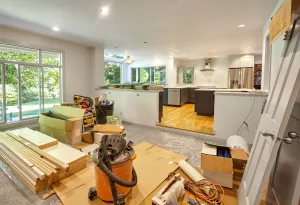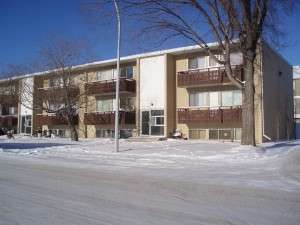There are two main ways to invest in real estate. And by invest I mean pure investment, with no ulterior motives like shelter for you and your family (see Your Home Is Not An Investment). As with most investments, real estate can be held for the long term, or for a very short time; the differences between these two investment styles are defined by each strategy’s respective risks and rewards.

Buy and Hold (Renting Out Your Property)
The big gain in long-term real estate investing is made on the home’s appreciation.
When you buy property with the intention of keeping it for the long term, you’re probably going to have to rent it out. After all, if you have a mortgage payment to make every month, it’s best to have a renter to make that payment for you. The rent you charge on your property can provide cash flow and sometimes income, but the big gain in long-term real estate investing is made on the home’s appreciation. Generally, this takes time.
Because most rental rates reflect mortgage rates, this is an investment that will take a long time to pay off, and will probably cost you some money along the way as well. But the value in long-term real estate investment comes from appreciation of the property’s value over time. This generally doesn’t happen quickly because real estate market fluctuations are based on so many factors that no one knows precisely when property values will increase, or by how much. If you can’t afford to let your money sit for at least five years, then you can’t safely invest in real estate for the long term. In a best-case scenario, you should be able to leave that money tied up until it’s truly profitable to cash in on your investment.
There are some risks to holding a property over time, including the cost of repairs and the potential for vacancies – not to mention poor tenants or natural disasters. If you aren’t careful or the property doesn’t appreciate by enough, these things can eat up your profit. Overall, however, investing in real estate often pays off. Of all the long-term investments you can make, it is still one of the safest and most lucrative.
Buy and Sell (Flipping Your Property)
Flipping gained a following during the last real estate boom, but don’t be fooled: it is a very risky business.
Flipping gained a great following during the last real estate boom, but despite what you might have seen on TV, holding real estate for the short term is very risky. And it certainly isn’t for those who are faint of heart or light of wallet.
Compared to long-term investing, short-term property investment involves making a quick buck by getting a home at a discounted price, renovating it and selling it for a profit. In a hot market, the potential profit can be buoyed by fast-rising property values. But don’t count on this in itself; a market can change in a matter of weeks. Flipping is really about taking something with potential and capitalizing on that potential. The risk is that if you hold property for more than a few months without renting it out, you’re likely to see your profit margin evaporate in mortgage, utility and renovation charges.
Flipping is a short-term investment because renovations need to completed quickly so the home can go back on the market. The profit margin here is narrow, so if you underestimate your project’s timeline, you could end up with no profit, or even a loss. This means that flippers need to choose carefully when it comes to renovations and repairs. This is no time to live out your dream by making a home that’s perfect for you: quick, clean, simple repairs and renovations are best. And consider starting small with an apartment-style condo. If that goes well, it may be time to try your hand at something more ambitious. Finally, aim to someday achieve the holy grail of house flipping: paying for the property in cash. This will greatly improve your ability to turn a profit and add much needed security in case you need more time to complete your flip.
Be Flexible
Quick, clean, simple repairs and renovations are best.
It’s best to go into a real estate investment with a plan, but there’s nothing to say that you can’t change your mind if the market changes. For example, if you intended to hold a property for five years but the market takes off after only two, you can always decide to sell at that point – with or without renovations. Also, if you have a tough time selling a property after an attempted flip, you can decide to hold on to it. Good real estate investors always have a Plan B, so give some thought to what options you might have if the market renders your initial plan unfavorable.
Do Your Research
Real estate is a big investment that often carries a lot of risk and involves a lot of work. If you think you want to invest in property, do some research about what it will entail, and get to know the tax rules and laws involved. If you’re not deterred by what you learn, draw up a detailed plan of attack and consult your accountant, real estate agent and mortgage professional to get started. Many people own a home, but few invest in real estate – and even fewer invest successfully. Whether you become a landlord or flip a property, know that there is no sure thing in investment real estate. This means you could lose money (and many people do). If you’re not OK with that, the property market probably isn’t the place for you.
by +Alan F Macdonald REALTOR® | Copyright © – gimme-shelter.com
[30002]

